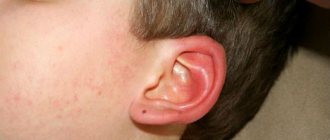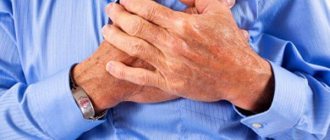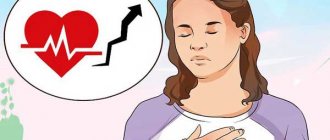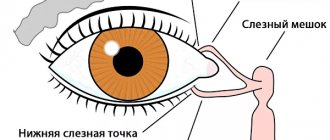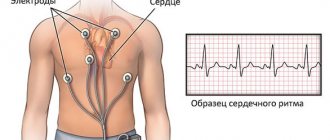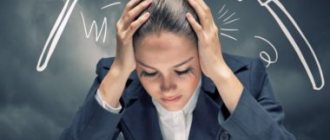Neurologists and otorhinolaryngologists at the Yusupov Hospital often have to consult patients whose main complaint is tinnitus.
Patients describe their sensations in different ways. The noise may resemble ringing, squeaking, buzzing, crackling, rumble, buzzing, rustling, hissing. Its intensity also varies.
Often tinnitus is combined with symptoms such as dizziness, nausea, unsteadiness of gait, darkening of the eyes, and headaches.
Let's look at the most common causes of tinnitus.
Classification of noise in the head and ears
Due to the variety of noise variants, they were classified - combined into groups, common according to the causes of occurrence or characteristics of the course of the disease.
EPFowler (1947) identified two types of tinnitus:
- objective, or vibrator (occurs as a result of vibrations of any parts of the body, exists in reality, can be recorded using a phonendoscope or the use of other diagnostic methods);
- subjective, or non-vibratory (felt by a person, but does not occur in reality, the source of the hum in real life is absent; it cannot be assessed from the outside; it is also called the term “tinnitus”).
In their practice, doctors use a classification of noise based on its cause and distinguish:
- noise of the external, middle ear;
- muscular;
- vascular;
- central;
- peripheral noise.
Shpidonov Gennady Stanislavovich
Neurologist
Rostov State Medical University (neurology)
10 years of experience
Depending on the quality characteristics, the following are distinguished:
- one-sided or two-sided;
- pulsating or monotonous;
- arising from time to time or present constantly;
- low-frequency hum or high-frequency squeak, ringing;
- barely noticeable or strong, intense noise.
Ringing degrees
Despite the difficulty of assessing the intensity of tinnitus, this symptom can be determined by the degree of noise intensity. Russian otorhinolaryngology has developed its own classification of noise intensity, thanks to Academician of the Russian Academy of Sciences I.B. Soldatov. This classification includes 4 degrees of tinnitus intensity and reflects the practical significance of this symptom.
- Degree. At this degree, the patient easily tolerates noise, it does not affect the general condition and well-being of the patient and is noted only in the quietest conditions.
- Degree. The patient experiences frequent distractions by noise in quiet areas or at night. In some cases, there is difficulty going to bed.
- Ringing in the ears constantly bothers the patient, as a result of which the patient’s behavior is disrupted. He becomes irritable, the emotional background is constantly tense.
- The patient experiences unbearable noise, which almost completely deprives him of sleep and makes daily activities difficult. The patient's ability to work is significantly reduced.
This classification, despite all the subjectivity, allows you to most effectively assess the severity and degree of ringing in the ears, which turns out to be very valuable in the rational planning of treatment measures and the elimination of this symptom.
Causes
Noises in a person’s head are not always a symptom of pathology. Many sounds arise in our body during its life - during blood flow, joint movement, contraction and relaxation of muscles. They are masked by other sounds present around us and seem invisible to us, and in conditions of complete silence we can pay attention to them.
However, in most situations, extraneous noise, humming and other sounds in the head or ears are a sign of a pathological condition and a reason to contact a specialist.
Vibrator noise is caused by:
- diseases of the temporomandibular joint;
- neuromuscular diseases (gap of the auditory tube, myoclonus of the muscles of the soft palate, middle ear);
- changes in blood vessels (heart valve defects, narrowing of arteries, problems with veins, arteriovenous shunts).
Subjective noise may be based on:
- metabolic disorders (diabetes mellitus, thyrotoxicosis, hyperglycemia, hypoglycemia, atherosclerosis);
- brain tumors;
- neuroma of the VIII pair of cranial nerves;
- diseases of the hearing organ (cerumen plug, otitis, sensorineural hearing loss, labyrinthitis, neoplasms, Meniere's disease, trauma);
- damage by toxic substances (medicines that have a toxic effect on the organ of hearing, methyl alcohol and others);
- diseases of the spine (degenerative-dystrophic changes, instability and others);
- neurological diseases (acute and chronic cerebrovascular accidents, multiple sclerosis, neurocirculatory (vegetative-vascular) dystonia);
- hypertonic disease;
- mental disorders (neurasthenia and other neurotic disorders, depression, schizophrenia);
- exposure to noise and vibration in production;
- traumatic brain injuries (bruises, contusions).
Shpidonov Gennady Stanislavovich
Neurologist
Rostov State Medical University (neurology)
10 years of experience
How is this disorder diagnosed?
A careful review of a patient's medical history can help determine whether he or she actually suffers from exploding head syndrome. This may also rule out the possibility that symptoms, even if they indicate EHS, are related to another sleep disorder.
Before visiting a doctor for a consultation, the patient can keep a sleep diary. A sleep diary can help chart a patient's sleep patterns. It can also help the doctor determine whether part of the patient's sleep pattern is causing the problem. When making entries in a sleep diary, it is important for the patient to be as detailed as possible. This may help your doctor make a diagnosis.
There are no tests for exploding head syndrome. Your doctor may recommend an overnight sleep study or polysomnogram. During a sleep study, a doctor or medical technician watches the patient while he or she sleeps. A polysomnogram uses other diagnostic tools that can monitor a patient's heart rate, breathing rate, and brain waves during sleep. There are also sleep studies, where the doctor uses a video camera to record the patient's movements while they sleep. A sleep study can help a doctor determine if another sleep disorder is causing the loud explosions a patient hears.
Rumble in my head
It can also be normal if it appears when a person is in a noisy environment (on a street with active traffic, in a crowded place, in a noisy industry) and after returning to a quiet place, it gradually goes away within two hours. Sometimes it appears as a side effect of a number of medications - antidepressants, anticancer drugs, some antibiotics and NSAIDs. It can also occur in the postoperative period during operations on the organ of hearing - in this situation it is a consequence of intervention in the apparatus that conducts sounds, and after a while it goes away on its own.
Diagnosis and treatment of noise in the head
When this unpleasant symptom appears, you should not waste time doing self-diagnosis, try to cope with it yourself, or hope that “it will pass.” The correct decision for the patient is to seek help from a specialist.
Diagnosis of diseases accompanied by noise in the head is carried out by doctors of various profiles - therapists, otolaryngologists, neurologists, psychotherapists/psychiatrists. But most often, patients with such a problem turn first to a neurologist.
First of all, the doctor’s task is to specify the noise, to understand what exactly the patient feels - a high-frequency squeak, ringing, buzzing, buzzing or hum, one- or two-sided, accompanied by pulsation or not; clarify the intensity of sensations and the symptoms that could accompany them. If the patient does not tell him himself, the doctor will ask leading questions about whether there is hearing loss, congestion in the ears, headache (usually occipital) pain, a tendency to increase or decrease blood pressure, find out what somatic diseases the person seeking his appointment suffers from. Human. Based on these data, the specialist will suggest what type of tinnitus he is dealing with - objective or subjective. Then he will conduct an objective examination - examine the organ of hearing and perform a number of tests necessary to make a diagnosis.
Shpidonov Gennady Stanislavovich
Neurologist
Rostov State Medical University (neurology)
10 years of experience
At the end of this diagnostic stage, the neurologist will make a preliminary diagnosis (or several putative diagnoses) and prescribe further examination to clarify it, in particular:
- general blood and urine analysis;
- blood biochemistry (lipidogram, coagulogram, ferritin);
- duplex or triplex scanning of neck vessels;
- MRI of the brain or cervical spine;
- consultation with an ENT doctor.
The scope of examinations is determined individually, depending on the specific clinical situation.
If a somatic doctor has not established the cause of noise in the head, he will assume the psychogenic nature of this condition and recommend that the patient consult a psychiatrist or psychotherapist. The specialist will have a targeted conversation with the patient, find out what complaints he has, focusing on feelings of anxiety or fear, decreased mood, especially in the morning, sleep disturbances, severe weakness, palpitations, sudden fluctuations in blood pressure, and will clarify whether this condition is permanent or temporary, not Is it related to stress? If a patient is suspected of neurosis, psychosomatic disorder or depression, the doctor will conduct a series of tests to clarify the diagnosis.
Only after the diagnosis has been established is it recommended to begin treatment for noise in the ear and head.
Medicines for noise in the head and ears
Conservative therapy often helps to cope with this symptom. Depending on the manifestation of which disease the noise is, the patient may be prescribed medications from the following groups:
- antibacterial, anti-inflammatory drugs (for infectious and inflammatory diseases of the ear);
- vascular drugs (improve blood circulation, nutrition of brain cells, dilate blood vessels);
- nootropics (improves metabolic processes in the cells of the nervous system);
- B vitamins (improve trophism of nervous tissue);
- trimetazidine (nourishes the heart muscle);
- iron supplements (if the noise is based on iron deficiency anemia);
- betahistine (for noise due to increased pressure in the cochlear labyrinth);
- antidepressants, anti-anxiety drugs, antipsychotics (if the pathology is psychogenic);
- sedatives, hypnotics – if the patient complains, it is not the inability to sleep;
- medications containing caffeine (for a tendency to low blood pressure, severe weakness and other symptoms of asthenia).
If the cause of the disease is cerumen, the doctor will wash it out of the ear and the noise will disappear.
Surgery
With confirmed damage to the autonomic nervous system, non-vibratory tinnitus can be eliminated by surgical intervention in the area of the nerves of the tympanic cavity or cervical sympathetic nodes.
Surgery on damaged structures of the tympanic cavity or cochlea will help get rid of objective noise.
Other treatment methods
As auxiliary methods of therapy, the patient may be prescribed:
- wearing a hearing aid, electrical stimulation of the auditory nerve (with decreased hearing acuity);
- physical therapy;
- massage;
- physiotherapy;
- psychotherapy.
Possible complications
Tinnitus may appear without warning, disappear spontaneously, or become chronic.
In addition to constant pulsation, a person may suffer from stress, sleep problems, anxiety or depression. These conditions can cause further deterioration of the heartbeat. Thus, a person finds himself in a vicious circle.
Therefore, it is important to contact a specialist who will help cope with the problem.
If the cause of tinnitus is a heart condition, if left untreated, the normal functioning of the heart can be affected, leading to serious complications over time, including:
- heart failure;
- heart attack;
- sudden cardiac arrest, death.
How to relieve an attack of severe noise in the head and ears
Treatment for severe head noise depends on its cause. If it occurs suddenly, is intense, is accompanied by vomiting, severe pain, heaviness in the head, dizziness, significantly worsens the person’s condition, and it is dangerous to fight it on your own - it is important to call an ambulance as quickly as possible.
Shpidonov Gennady Stanislavovich
Neurologist
Rostov State Medical University (neurology)
10 years of experience
If it is a sign of chronic pathology, is already familiar to you, and is not the first time it has appeared, you can try to cope with the noise using the following self-help methods:
- taking a relaxing bath;
- a full eight-hour sleep (on a comfortable mattress with a comfortable pillow, in a dark room, in silence);
- physical activity (such as yoga or jogging in the park);
- listening to calm music.
Some people are helped to eliminate noise by so-called “masking” - listening to a pleasant, soothing sound (such as the splashing of waves, the murmur of a stream, the chirping of birds) directly in nature, using an audio recording or a special device.
Prevention of pulsating noise in the head
The noise that occurs in the pulse rhythm is characteristic of vascular pathology of the brain. It can be prevented by a person’s attentive attitude to his health throughout his life - quitting smoking, regular exercise, adherence to a work and rest schedule, a nutritious, balanced diet, blood pressure control, timely medical examinations and treatment of vascular diseases that have arisen in the early stages. If these diseases already exist, following the recommendations described above will help reduce the intensity of the hum, alleviate it, which will improve the person’s quality of life.
If pulsating noise appears in the head only in certain situations (under stress, when working at the computer), its prevention will be to minimize exposure to situations that provoke deterioration of the condition.
What do people with EHS hear?
Some patients describe the sound they hear as being like the sound of cymbals hitting. There are also those who compare the sound of an exploding bomb. Sometimes the sound is not as loud and less disturbing. There are times when a sound is accompanied by a flash of light. Some patients experience twitching along with a loud sound. An EHS episode is often painless. However, there are some patients who have reported feeling sudden painful blows to the head during an attack.
The intensity of the sound makes some patients think they are having a stroke. Episodes of exploding head syndrome may vary in frequency. This may happen very rarely. There are also cases where the patient experiences several episodes in just one night. Some patients experience multiple attacks over several nights. Several weeks or months may follow without a single episode before episodes of EHS occur again.

